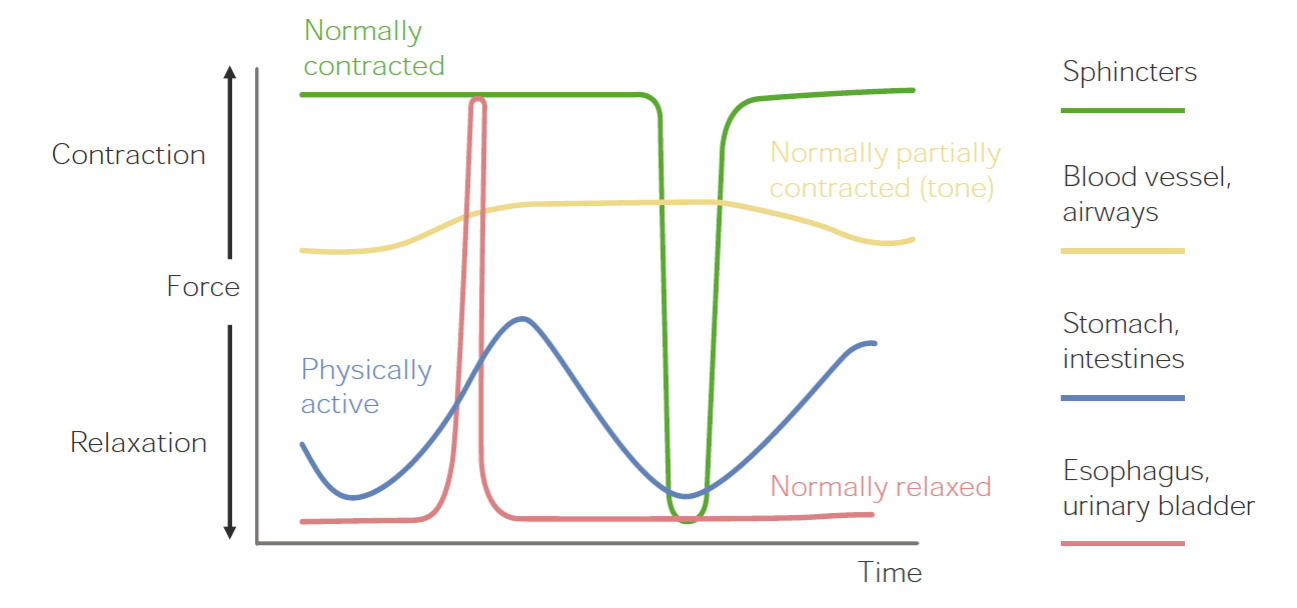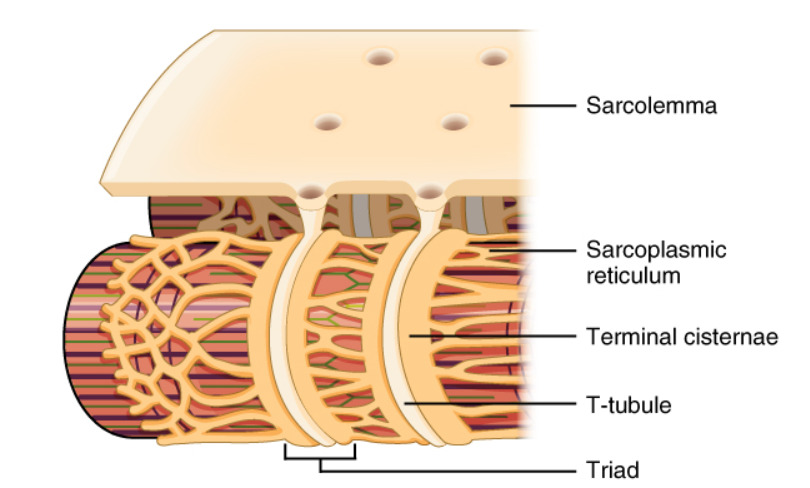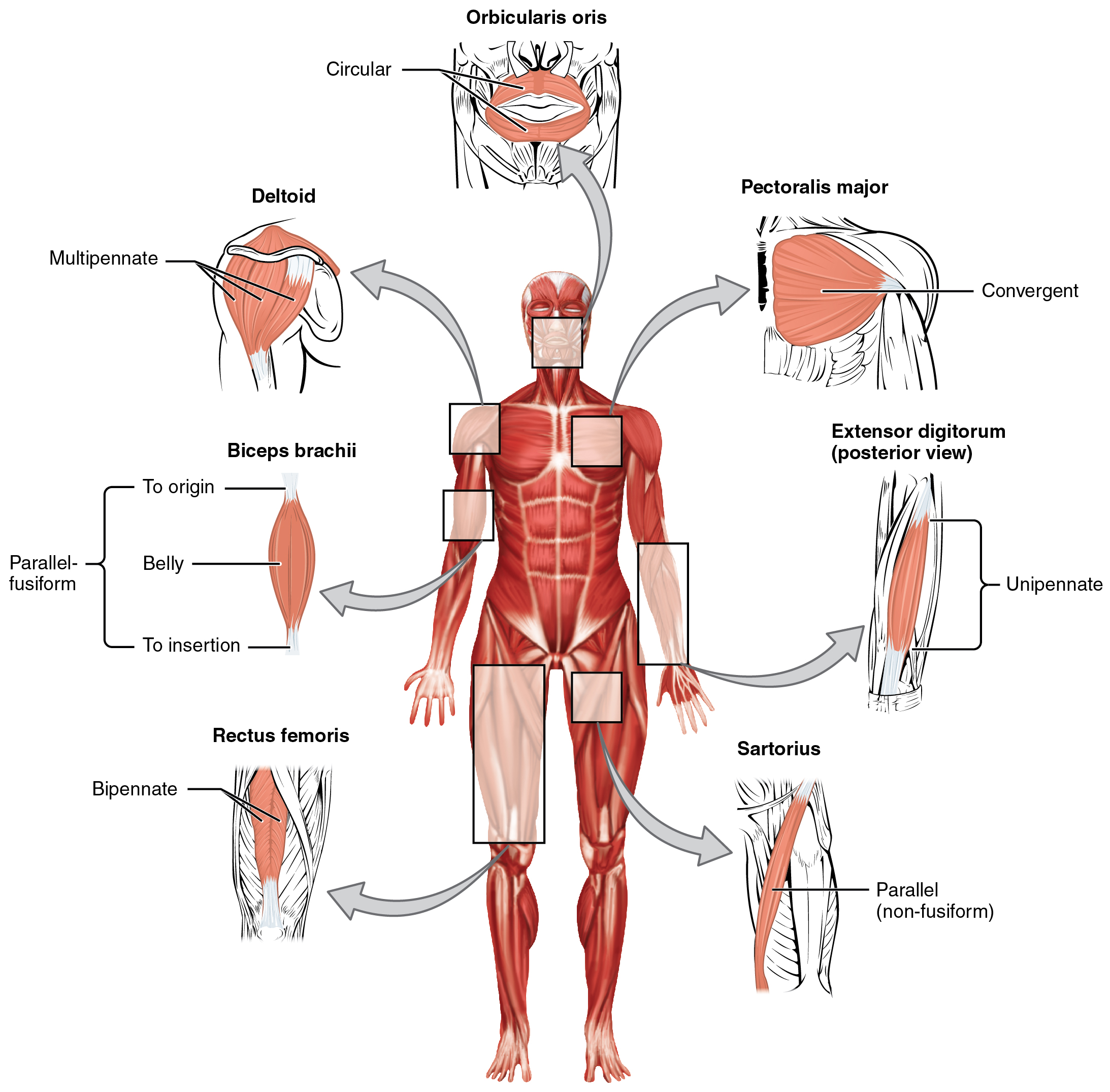Playlist
Show Playlist
Hide Playlist
Initiation of Muscle Contraction
-
Slides Physiology Muscleoskeletal.pdf
-
Download Lecture Overview
00:01 How do you start a muscle contraction? This is an alpha motor neuron driven event. 00:10 The alpha motor neuron soma or cell body is located in the spinal cord. 00:15 They will project all the way out to whatever muscle you are going to try to contract. 00:22 These are cholinergic nerves, meaning that they will release acetylcholine. 00:28 They do this so at the neuromuscular junction. 00:31 These are specialized areas on the muscle sometimes referred to as motor end plates. 00:38 Acetylcholine is released, it binds to a postsynaptic acetylcholine receptor. 00:47 These acetylcholine receptors are ionotropic, meaning that they’re going to allow ions to pass through. 00:54 In this case, the ions pass through, primarily sodium but not solely, will depolarize the sarcolemma, which is the specialized name of the plasma membrane of muscle. 01:09 You might ask, how do you turn off this response? Acetylcholinesterase will break down acetylcholine and that terminates the signal. 01:19 But the acetylcholine receptor membrane potential change then moves along the sarcolemma. 01:27 From the sarcolemma membrane, that depolarization then travels down the T-tubules. 01:34 As it travels down the T-tubules, now you’re in close proximity to some receptors that can start the initiation of a muscle contraction. 01:47 These particular receptors are lined along the T-tubule. 01:52 They are known as dihydropyridine receptors or DHP. 01:57 These dihydropyridine receptors are mechanically tethered to another receptor known as a calcium release channel or sometimes referred to as a ryanodine receptor. 02:10 These ryanodine receptors are hooked to the sarcoplasmic reticulum. 02:17 And in fact, when the dihydropyridine receptor is engaged by a change in voltage that comes down the T-tubule, it then moves off these calcium release channels to allow calcium to spill out. 02:32 It is this calcium that spilled out that will eventually bind to troponin C to start a muscle contraction. 02:41 How you stop a muscle contraction or the spill out of calcium is to relax or turn off the dihydropyridine receptor, which then turns off the calcium release from the calcium release channels. 02:57 To achieve muscle relaxation in addition to stopping calcium release from the calcium release channels, the released calcium also has to be pumped from the cytosol back into the sarcoplasmic reticulum to be able to break the link between actin and myosin. This action is performed by the sarcoendoplasmic reticulum calcium ATPase, also known as SIRCA.
About the Lecture
The lecture Initiation of Muscle Contraction by Thad Wilson, PhD is from the course Musculoskeletal Physiology.
Included Quiz Questions
Which of the following is activated by membrane depolarization within the T-tubule of a skeletal myocyte?
- Dihydropyridine receptor
- Ryanodine receptor
- Inotropic nicotinic receptor
- Metabotropic nicotinic receptor
- 5HT receptor
Which neurotransmitter is responsible for the initiation of skeletal muscle contraction?
- Acetylcholine
- GABA
- Glutamine
- Glycine
- Norepinephrine
Which of the following allows for Ca2+ to reenter the sarcoplasmic reticulum and terminate the muscle contraction?
- Sarco/Endoplasmic reticulum calcium-ATPase (SERCA)
- The dihydropyridine receptor
- The ionotropic nicotinic receptor
- The muscarinic receptor
- The alpha-2-adrenergic receptor
Customer reviews
5,0 of 5 stars
| 5 Stars |
|
5 |
| 4 Stars |
|
0 |
| 3 Stars |
|
0 |
| 2 Stars |
|
0 |
| 1 Star |
|
0 |






